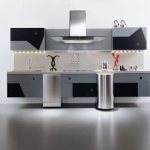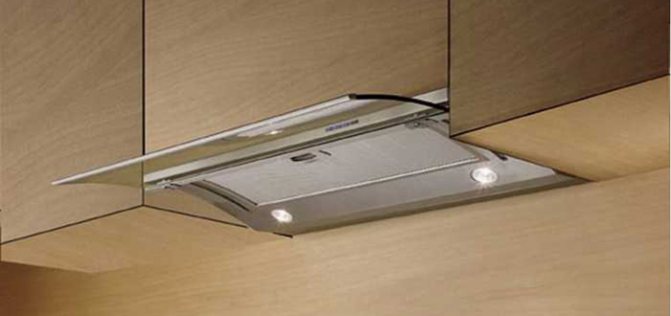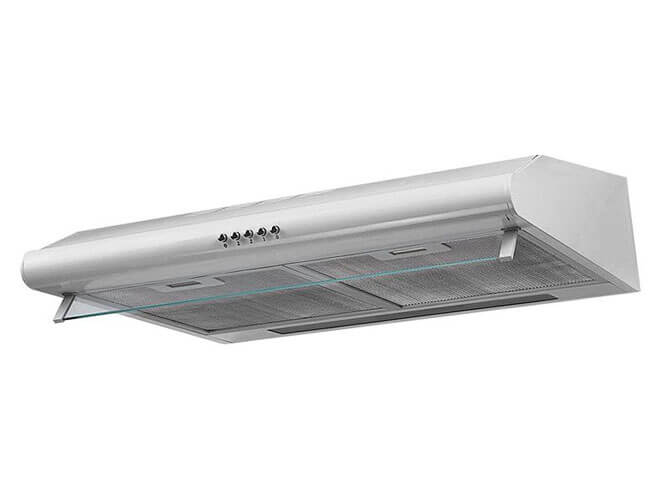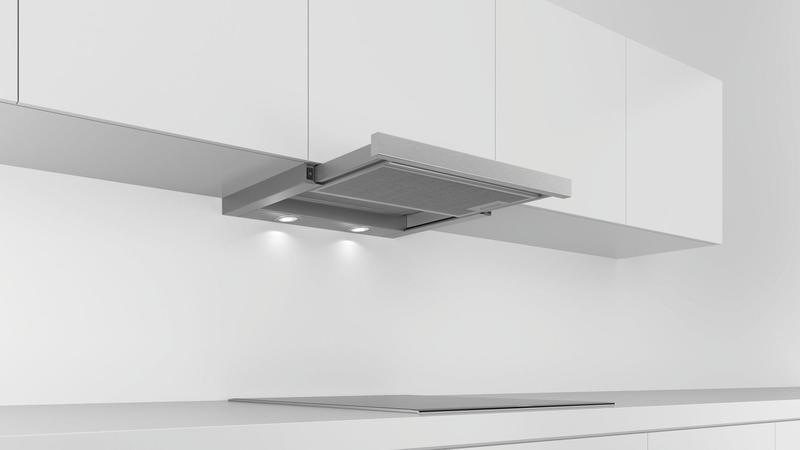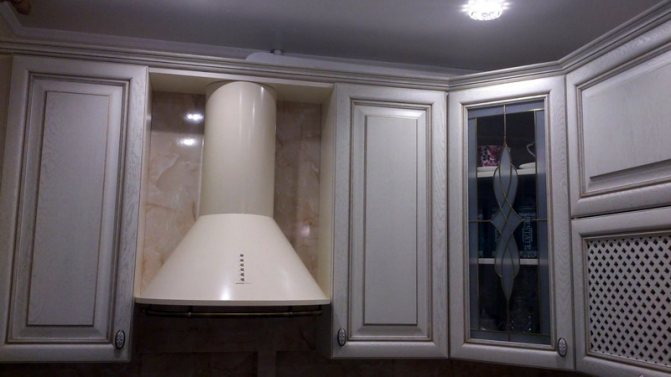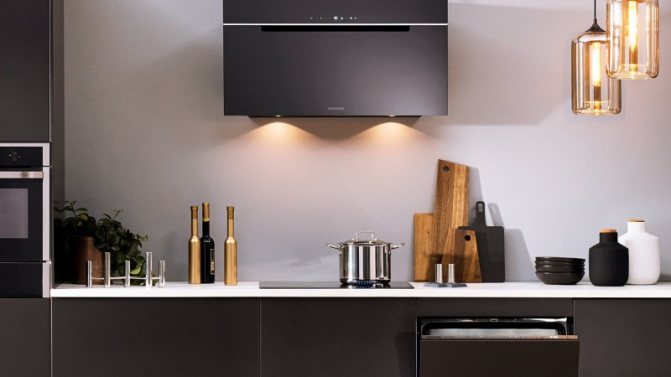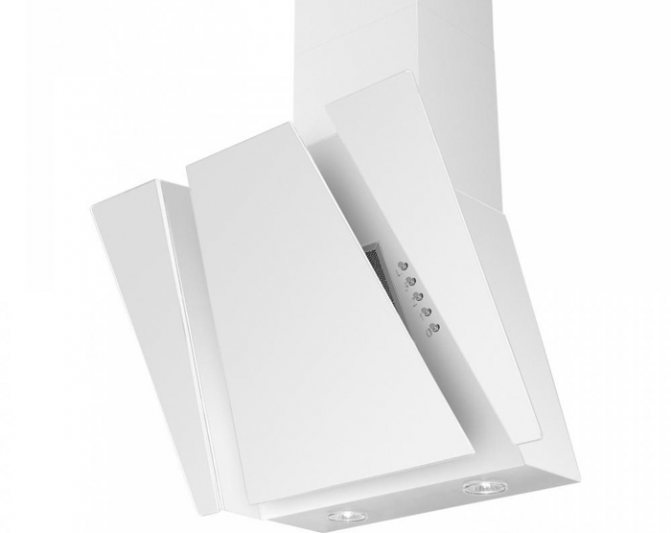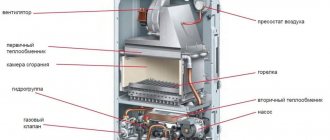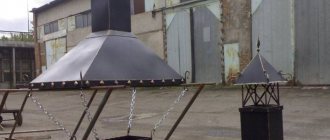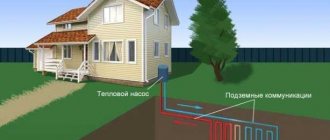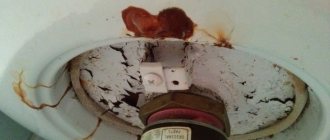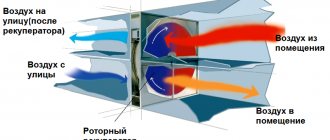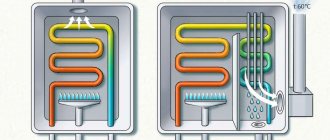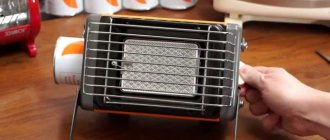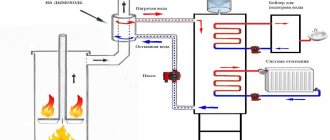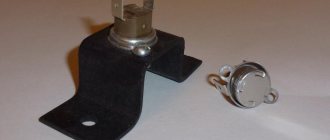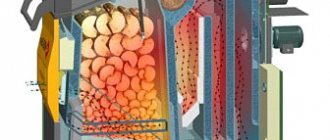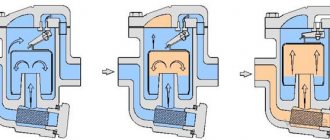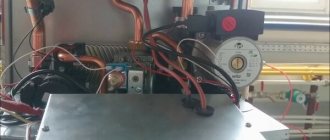The kitchen is the most popular place in the apartment. Cooking on a gas stove pollutes the kitchen atmosphere with natural gas vapors, combustion products, grease particles and unpleasant odors. For the inhabitants of the apartment, the constant inhalation of dirty air causes drowsiness, increased fatigue, poor appetite and even respiratory diseases.
A cooker hood is an almost essential element of every kitchen.
A hood device in the kitchen will help to avoid unpleasant consequences. The market offers a huge variety of exhaust equipment. In order not to get confused in it, you need to study what models are and how they work.
Exhaust equipment and its device
A household hood is a specialized device that cleans the air from impurities, smoke, unpleasant odors emitted during the heat treatment of food. The design of this apparatus consists of several parts, such as a housing, a ventilation unit, filters for collecting grease, and a control panel. Grease filters protect the motor and the inside of the equipment from the accumulation of fatty deposits.
All components of this equipment are made of materials that are resistant to rust and temperature extremes. The body of the device is made of stainless steel as standard. The modern model, in addition to the function of air purification, can at the same time be a decoration of the kitchen, it also plays the role of a design object. Therefore, in addition to stainless steel, glass, wood, ceramics are used for the manufacture of the case, and the hood is decorated with various decor.
How household hoods work
There are several types of cooker hoods. The principle of operation is the main criterion for distinguishing between models. Each type has its own advantages and disadvantages. Types of equipment according to the principle of operation:
- flow-through type;
- circulation type;
- mixed.
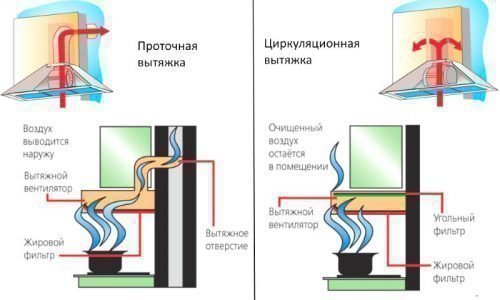
The principle of operation of the flow and circulation hood
The flow model is connected to the general ventilation system of the house. It is equipped with an air duct through which the polluted air goes to the general ventilation. Clean air enters the kitchen from other rooms or from open windows.
The circulating hood is not connected to the ventilation system by the duct. Air contaminated with vapors and odors is cleaned in the filter system and then returned to the kitchen. How does a kitchen hood with a circulating mechanism work? It has an air collector with a filter system, which receives the polluted air from the kitchen.
Also, this type of hood is equipped with a powerful motor for greater efficiency. Circulating hoods are well suited for kitchens where the ventilation duct is removed from the stove. They can be installed in older houses with poor ventilation. Typically, the circulating hood is equipped with activated carbon filters, which must be changed periodically.
Mixed hoods have an air duct and a filter system. They work both in the circulation and in the flow mechanism. In winter, you can set the circulation type of work in order to keep the heat in the apartment. To make a mixed flowing unit, a filter system is installed inside.
The flow-through hood has one significant drawback. When turned off, it interferes with the natural circulation of air in the kitchen, because it closes the ventilation.
This necessitates leaving windows open. The circulating hood is devoid of this drawback. But it also has its drawbacks.The circulating cooker hood is very noisy. This is due to the increased power of the motor. The price of filters for circulating hoods is high, and they need to be changed regularly.
Benefits of forced draft
We have already discussed some of the advantages of installing a forced air exchange system. However, this is not all. Such systems have many other advantages:
- They turn on automatically. Some hoods have human motion sensors - the ventilation system starts when there is someone in the bathroom. Others are equipped with humidity sensors that are sensitive to water vapor in the air. There are also coolers with a timer, when the user can independently adjust the start time of the ventilation system.
- They save energy. Since the hood does not always work, but only when necessary, excess electricity is not consumed. Yes, and such fans pull relatively little.
- They have a non-return valve. Would you like the option of getting air from other rooms into the ventilation system? We are sure not. It is for such purposes that hoods with a so-called non-return valve have been developed. They prevent dust from entering the air from the street.
- They make little noise. Of course, absolutely silent fans do not exist - this is a fact. But the hoods work quite quietly and are not annoying at all.
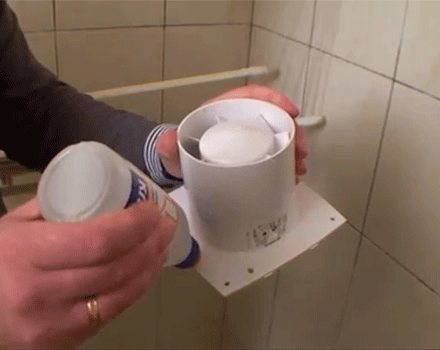

Selection parameters for the cooker hood
Installing exhaust equipment in the kitchen is a necessary and moderately difficult task. Before buying an air purifier, familiarize yourself with the basic criteria for choosing a model, you need to know the principle of the hood operation. The hood design plays an important role:
- the mechanism of the air cleaner;
- type of hood installation;
- hood size parameters;
- the efficiency of the hood;
- material from which the hood is made;
- the noise level of the hood operation.
With the principle of operation of the kitchen hood, everything is already clear. Let's dwell on other parameters in more detail.
Output
Having studied the features of the device, the principle of operation, the nuances of operation and installation, we can conclude that the hood must certainly be present in the kitchen. The choice of modification depends on the size of the room, the intensity of the work process, financial capacity and personal preferences.
Connecting the hood to ventilation, the principle of which is based on the suction of the air flow and its subsequent transportation to the ventilation shafts, is more complicated and requires certain calculations. For example, excessively long air ducts will look unaesthetic and reduce the efficiency of the device itself. Subject to certain points, installation work is very simple and straightforward.
View gallery
The option without an air duct in installation is much easier, and its price is lower. However, there are some peculiarities here. Regular replacement of the filter elements will be required, otherwise the extraction efficiency will noticeably decrease. Devices without interaction with ventilation have several types of fastening, which allows you to choose them for any size and interior of the room.
Installation types of household exhaust devices
Air cleaners differ not only in the principle of operation, but also in the types of installation.
- Flat suspended models. They represent a canopy and are installed above the slab on the wall. The device of this type of kitchen hood is not always efficient enough, but it has a varied design and small size.
- Ceiling air purifiers. They are mounted on the ceiling. Island models are applicable only for large and spacious rooms.
- Embedded models. They are mounted inside the cabinet hanging above the stove. The most compact type of hoods. They are closed with a wardrobe, which allows you not to overpay for the design.
Each type has its own capabilities. Flat pendant models have an interesting design. Ceiling air purifiers are more powerful.
Hood dimensions
The standard width of the factory kitchen models is 60, 90 or 120 cm. The size of the air cleaner must be the same or slightly larger than the size of the worktop. For a standard hob with a width of 60 cm, an exhaust unit with a width of 90 cm is perfect. Too large a model with a wide neck, it is not worth installing over a small-sized stove, the efficiency will not increase, but the noise level will significantly exceed the norm.
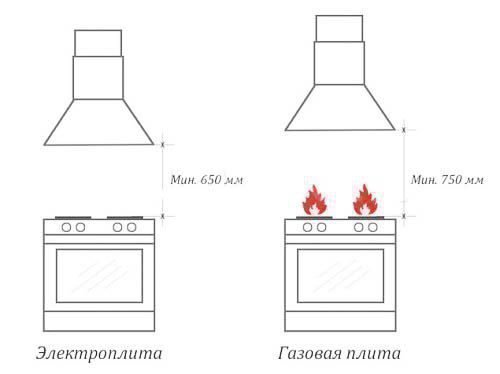

Diagram showing the required distance of the hood from the stove
Before buying an air purifier, keep in mind that according to the rules, it is installed at a distance of 70 cm above the electric stove, and 80 cm above the gas oven.
Unit installation with duct
By and large, connecting a kitchen hood to ventilation will not pose any particular problems. The main thing is that all connections are tightly and securely fixed. When performing work, you need to take into account the following recommendations:
- The connection must not completely block the ventilation channel, so that when the device is turned off, natural air draft is carried out.
- Normal operation of the unit will ensure the passage of air flow without additional interference.
- The length of the duct and the number of curls should be kept to a minimum.
- When choosing between a corrugated and a smooth surface of pipes, it should be borne in mind that the first option bends well, but delays the flow of flow.
- On bends, the duct should have smooth transitions.
- Additional air flow after ventilation or constant supply from the street will make the hood more efficient.
- It is forbidden to install a device with an outlet to the flue gas pipe.
View gallery
The way how to connect the hood to the ventilation on your own does not present any particular difficulties, provided that certain nuances and technological subtleties are observed.
What are the hoods made of?
The cost and service life of exhaust equipment largely depends on what material it is made of. Manufacturers now make models from stainless steel, metal alloys, aluminum, glass and plastic. Plastic and metal alloy are considered to be the cheapest materials.
Plastic can be more or less durable, depending on the cost. Plastic models are easy to clean and do not rust. The plastic air purifier looks simple and strict. Plastic hoods are usually built-in hoods.
A hood with an aluminum casing is the best option. Aluminum is of high quality and inexpensive. These hoods do not rust, are easy to clean and fit any interior.
The elegant and expensive air purifiers are available in stainless steel or solid glass. Such a stainless steel model works for a long period of time, so it is better to pay more and enjoy the beauty for a long time.
Features of a competent choice
In order to correctly select a hood that meets all the requests of future users, important points are taken into account:
- It is best if it fits well with the style of the room;
- It is necessary that all the air in the kitchen be purified in an hour;
- There should be no loud noise during operation;
- The type is correctly selected depending on the possibility of laying an air duct in the wall;
- Management should be simplified;
- You can buy a hood with various additional functions that increase the comfort of its use;
- It is necessary that the price matches the quality.
White kitchen design, range hood in the interior.
Thus, having studied all the parameters of the hood, each person will independently understand which structure is better to purchase. The point is that each parameter is important and meaningful.As a result, you do not have to put up with various disadvantages of the equipment. The instructions for use attached to the equipment by the manufacturer are studied. The fact is that the durability and reliability of the structure depends on competent care.
White hood in a loft kitchen.
With the right choice, users will be satisfied with the efficiency, durability and attractiveness of the appliance. You should not overpay for additional features if you do not plan to use them in the future. The point is that each function significantly increases the cost of the equipment. However, in any case, it should be safe and comfortable to use.
Air cleaner efficiency
The efficiency of the equipment is determined by calculating its performance. The capacity of an air cleaner is the volume of air processed per unit of time. The parameter is measured in cubic meters per hour.
The modern market offers models with a capacity range of 200-1000 cubic meters per hour.
To calculate the required performance of the equipment, you need to know the volume of air in the kitchen. The volume of a room is calculated by multiplying the length, width and height by each other. If they cook a lot and often in the kitchen, and also smoke, then the productivity should be more than the calculated 200 cubic meters per hour. The performance of modern models can be adjusted independently depending on the needs.
How to choose the right one
How well the cooker hood works and whether it copes with the assigned duties depends on the characteristics of its performance. This refers to the ability of the exhaust device to pass a certain amount of air per hour. It is believed that within one hour the volume of air in the room should be changed 12 or more times.
When choosing a kitchen hood, you need to calculate the required performance taking into account the size of the kitchen. The classical calculation formula is as follows: room volume * calculated coefficient, which is 10-12. It is advisable to choose a device that has a power reserve, since working at the limit of capacity reduces the service life.
Another factor that you should pay attention to when choosing a hood is the noise of the device. Since housewives spend a lot of time in the kitchen, it is very important to make it comfortable. The optimum volume of the device is not higher than 50 dB.
One more point that I want to remind you of: do not forget about the size of the exhaust system - it should not be less than the width of the hob, otherwise the hood will not eliminate the entire volume of vapors and soot.
Additional features of the hoods
To improve the convenience of users, manufacturers have equipped the equipment with additional useful functions.
- Intelligent equipment control system. It provides an automatic increase in productivity in the event of an increase in the intensity of the work of the plate.
- Backlight. Provides additional illumination of the slab space. For backlighting, halogen or fluorescent lamps are used, less often conventional incandescent lamps.
- Filter clogging indicators. Filter cleanliness is key to circulating models. It is not always convenient to monitor this on your own, so such indicators are very useful.
- Interval inclusion. It provides round-the-clock air circulation. Special sensors turn on the equipment at low power once every hour.
To clean the atmosphere of the kitchen from pollution and keep the inhabitants of the apartment healthy, an extractor hood is needed. The market offers a large selection of hoods for every taste and budget. The most important thing is to understand exactly what such equipment is needed for, how it works in the kitchen, and what parameters will help to make the right choice of equipment.
How the cooker hood works
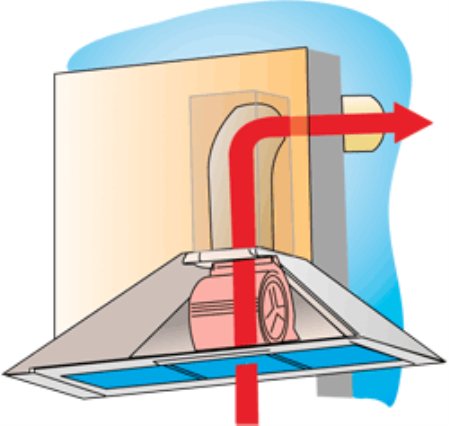

All types of cooker hoods are based on the same operating principle: capture and discharge of exhaust air. However, according to the method of performing this task, the hoods are divided into 3 types:
- Flow-through hood. The principle of operation of such a hood is to take in polluted air and remove it outside the room. Air is removed through ventilation. The advantages of a flow hood are reliability and durability, minus - the necessary access to fresh air (ventilation with an open window) and additional adapters for pipes in old houses.


- Recirculation hood. Such an exhaust hood cleans the exhaust air using a filtration system, and then returns it back to the room. Recirculation models are easy to install, their cost is lower than flow-through ones, but the disadvantages include the need to regularly replace carbon filters.
- Combined cooker hood. Combines the principles of both options. The peculiarity of the installation of the combined hood in planning during the renovation. Installing the hood for a finished repair will not work without damage.
Purpose of the hood
The hoods are designed to clean the air in the room. They are installed in the kitchen, as this is where air pollution most often occurs during the cooking process, therefore unnecessary odors appear in the room.
Black range hood for the kitchen.
Air purification is carried out in two different ways:
- Filtration, which involves the use of special filters through which air passes;
- Exhaust ventilation, which means that the exhaust air is completely removed to the street through the hood, and models with this principle of operation are considered the most effective and reliable, since the absence of unpleasant odors in the kitchen is guaranteed.
Built-in kitchen hood.
If the kitchen does not provide regular air purification, then it will be unpleasant for you to be in it.
If there is no structure in the room, then regular ventilation is necessary, which is not always possible in the cold season. It is best to install a kitchen hood above the stove, since it is from this household appliance that a lot of impurities and odors enter the air.
Cooker hood in a loft style kitchen.
Types of kitchen hood
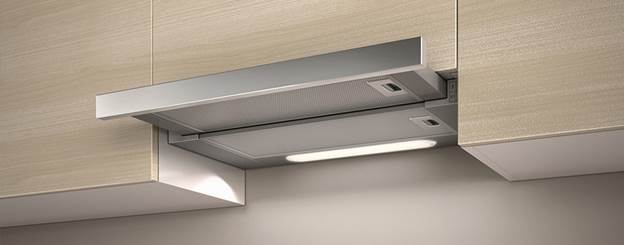

First of all, when choosing a kitchen hood, pay attention to the appearance. Depending on the design, there are several types of kitchen hoods.
- Built-in hood. Installed in a kitchen cabinet above the hob, so the hood is almost invisible from the outside. The inside of the cabinet is connected to ventilation. Low noise level and aesthetically pleasing appearance make this model the most popular among buyers. The pull-out hood increases the surface area to be covered and retracts back after the end of cooking.


- Suspended hood. The traditional version is located above the hob at the bottom of the kitchen cabinet. Takes up little space, easy to install, does not require a call of specialists for installation. It works on the principle of air recirculation, the low starting cost is paid off by purchasing expensive carbon filters.
- Dome hood. This technique is part of the stylistic interior design. Externally, the hood looks like a chimney pipe, takes up a lot of space, so it is not suitable for a small-sized kitchen. The range of dome hoods is wide; there is a suitable option for any style. The price range will delight every buyer.
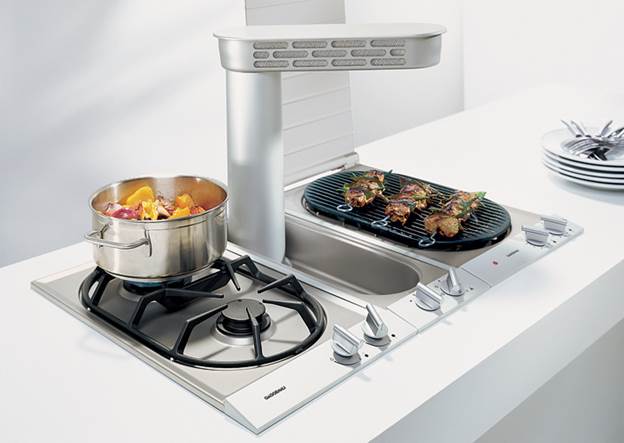

- Island hood. A type of domed hood, installed in a kitchen with a working area placed in the center of the room. This layout is called island. The hood, located in the center of the room, has more power and, accordingly, dimensions.
- Domino hood.A modern type of hood, mounted directly behind the stove in the work surface. During cooking, the hood moves upward, perpendicular to the stove. The disadvantage of this design is the high cost. In addition, for a large kitchen, it is safer to choose a more powerful and voluminous option.
Views
It is impossible to say unequivocally which hood is the best. In addition to the types and types described, there are also a lot of different models, therefore, if any of them were "very-very" - would the manufacturers spend their resources on the production of the entire model range? It is better to place the hood above the hob or even a built-in electric oven and away from the gas boiler.
Obviously, for different types of premises, their sizes and purposes, a certain type and model is better. For example, for a man in the street who lives alone, who uses the kitchen only for morning tea, dines at work, and in the evening he can occasionally fry eggs at home, completely useless and powerful expensive hoods. The cheapest model is enough, which will cope with its tasks without any problems under such "loads". And if you need a hood to the kitchen of a small dining room, where they cook every day, then here you will have to spend money on a powerful model with several cleaning steps.
The subtleties of choosing a kitchen hood
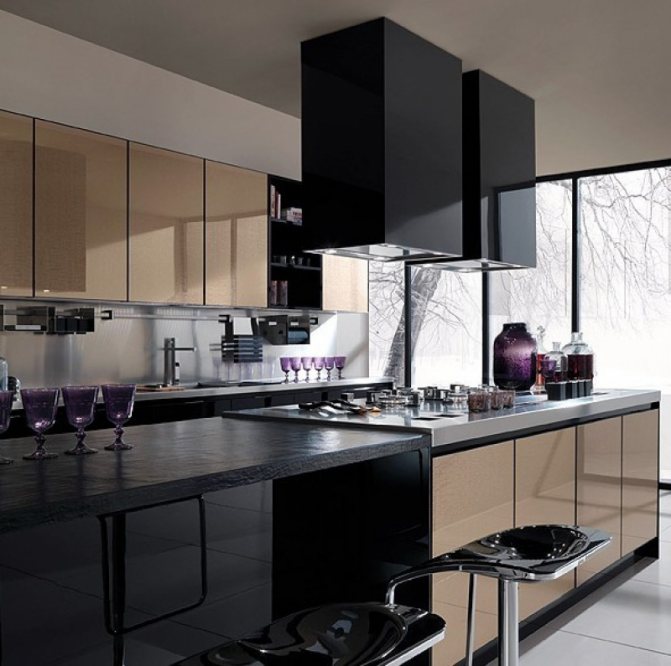

Before buying a kitchen hood, you need to decide on the size and type of future technology. In addition to these parameters, pay attention to the other technical characteristics of the hood.
- The capacity of the hood is measured in cubic meters per hour and determines the amount of processed air per hour. Calculate the required performance for a specific kitchen using a special formula, based on the data obtained, select the hood model.
- Find out about the type of hood filters used in this model. Coarse filters, presented in the form of a metal mesh, are available in all hoods. Clean the filter mechanically as it gets dirty. But the carbon filters for the recirculation hood will have to be purchased separately, they cannot be cleaned, only replaced.
- The hood can be controlled by touch, push-button or remote control.
- The hoods are equipped with useful additional functions. For example, lighting or the ability to set the operating interval for constant fresh air access.
It is not difficult to choose the right range hood for your kitchen. The cooker hood will get rid of annoying odors, help keep the kitchen clean and extend the service life of new renovations in the apartment.
23 august 2017
What is forced ventilation
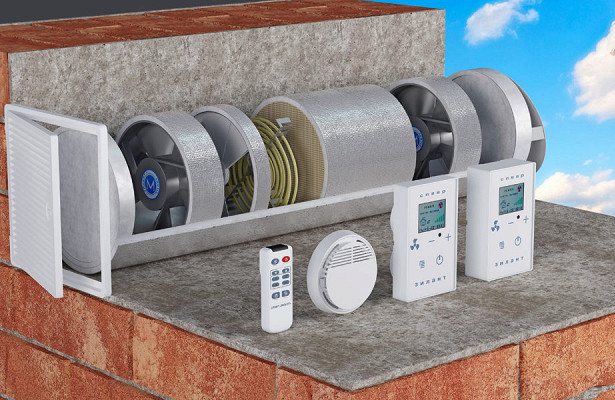

Supply ventilation unit in the apartment
Ventilation is generally understood as a deliberately created system of air renewal, implemented by replacing the waste masses with new, supply ones. In contrast to the natural process caused by the difference in temperature (pressure) inside and outside the building, the forced ventilation system needs a special motive force. An electric fan is usually used as the latter.
An additional element leads to the fact that the work on the arrangement of forced ventilation in the apartment also becomes more complicated. In this case, a careful calculation of all elements of the system is required, tied to the characteristics of the serviced object. When preparing for the independent design of the ventilation complex, the following points are taken into account:
- selection of air ducts convenient for placement within a house or apartment;
- drawing up a wiring diagram of their wiring;
- purchase of a fan of the required power.
Only after solving all these issues, you can proceed directly to the installation work.
How the cooker hood works
All types of cooker hoods are based on the same operating principle: capture and discharge of exhaust air. However, according to the method of performing this task, the hoods are divided into 3 types:
- Flow-through hood. The principle of operation of such a hood is to take in polluted air and remove it outside the room. Air is removed through ventilation. The advantages of a flow hood are reliability and durability, minus - the necessary access to fresh air (ventilation with an open window) and additional adapters for pipes in old houses.
- Recirculation hood. Such an exhaust hood cleans the exhaust air using a filtration system, and then returns it back to the room. Recirculation models are easy to install, their cost is lower than flow-through ones, but the disadvantages include the need to regularly replace carbon filters.
- Combined cooker hood. It combines the principles of work of both options. The peculiarity of the installation of the combined hood in planning during the renovation. Installing the hood for a finished repair will not work without damage.
How to install a cooker hood in the bathroom?
So, you have decided on the fan model - all that remains is to install it and get it working. Installation of the hood does not cause any particular difficulties, although if you have never dealt with electrical circuits, it is better to entrust this work to professionals.
- Choosing a location. As a rule, it is placed under the very ceiling and opposite the doors. The location of the hood on the same wall with the door opening is unacceptable.
- The bathroom cooler is installed in the already prepared opening of the ventilation channel. If necessary, it can always be expanded using a conventional grinder.
- The cooler is fastened with “liquid nails” or self-tapping screws. It must be completely "recessed" into the wall so that only the ventilation grill remains outside. The latter has a varied shape and color, so there will definitely not be any problems with choosing a lattice to match the interior.
- The fan is connected to the mains, preferably with a separate switch. Then it is closed with a grill on self-tapping screws or latches.
Types of kitchen hood
First of all, when choosing a kitchen hood, pay attention to the appearance. Depending on the design, there are several types of kitchen hoods.
- Built-in hood. Installed in a kitchen cabinet above the hob, so the hood is almost invisible from the outside. The inside of the cabinet is connected to ventilation. Low noise level and aesthetically pleasing appearance make this model the most popular among buyers. The pull-out hood increases the surface area to be covered and retracts back after the end of cooking.
- Suspended hood. The traditional version is located above the hob at the bottom of the kitchen cabinet. Takes up little space, easy to install, does not require a call of specialists for installation. It works on the principle of air recirculation, the low starting cost is paid off by purchasing expensive carbon filters.
- Dome hood. This technique is part of the stylistic interior design. Externally, the hood looks like a chimney pipe, takes up a lot of space, so it is not suitable for a small-sized kitchen. The range of dome hoods is wide; there is a suitable option for any style. The price range will delight every buyer.
- Island hood. A type of domed hood, installed in a kitchen with a working area placed in the center of the room. This layout is called island. The hood, located in the center of the room, has more power and, accordingly, dimensions.
- Domino hood. A modern type of hood, mounted directly behind the stove in the work surface. During cooking, the hood moves upward, perpendicular to the stove. The disadvantage of this design is the high cost. In addition, for a large kitchen, it is safer to choose a more powerful and voluminous option.
Types according to the installation site
It is necessary to choose the right hood for the kitchen, taking into account the place of installation of the equipment.There are wall or ceiling mount models. Most often, installation is carried out above the stove, and the fact is that it is from this device that the most contaminants and foreign odors come from.
Extractor hood installed in the kitchen.
Classic
Such hoods are flat, and are also most often mounted overhead. They are mounted on the walls, and directly above the stove in the kitchen. They are usually low power circulating models.
These structures have low performance and price, therefore they are usually chosen for a small room.
Range hood in a classic kitchen.
Embedded
Built-in hoods are installed in hanging boxes and can also be covered with various decorative panels. When using these models, you do not have to worry that the appearance of the kitchen will deteriorate.
Built-in hood for the kitchen.
Most often, a special pull-out panel is built into such a hood, which increases the area of intake of polluted air.
Built-in hoods are equipped with two motors and filters. The products are distinguished by ease of operation, different modes of operation and good performance. Their price is considered quite high, but they will not spoil the appearance of the room in any way.
Dome
These hoods are installed on the ceiling above the hob. This name is due to the specific dome shape of the devices, and the principle of operation is similar to that of a fireplace extractor.
Dome-shaped hoods for the kitchen.
Exhaust air enters the product body, after which it is discharged through the air duct into the ventilation shaft. It has special filters that remove odors and impurities from the air, and then the air returns to the kitchen.
These hoods are considered popular, therefore they are presented in numerous sizes and designs, which makes it possible to choose models that fit perfectly into the style of the room. The cost of the devices is low, so they are affordable for everyone.
Island
The hood for the kitchen is metal.
Hoods of this type can be installed anywhere in the kitchen. They are equipped with special fasteners that allow them to be properly fixed to the ceiling or wall.
Island arrangement of furniture and hoods in the kitchen.
They provide effective air purification, but these models are expensive. Their main advantage is their high performance. Hoods of this type are produced in numerous designs.
Corner
They can be installed in the corner of the room, and they are considered a good solution for a small kitchen. However, these models are available in a limited number of types, so they are not considered very popular.
Corner hood in the interior of the kitchen.
The choice of a specific product depends on the preferences and financial capabilities of the direct users.
The subtleties of choosing a kitchen hood
Before buying a kitchen hood, you need to decide on the size and type of future technology. In addition to these parameters, pay attention to the other technical characteristics of the hood.
- The capacity of the hood is measured in cubic meters per hour and determines the amount of processed air per hour. Calculate the required performance for a specific kitchen using a special formula, based on the data obtained, select the hood model.
- Find out about the type of hood filters used in this model. Coarse filters, presented in the form of a metal mesh, are available in all hoods. Clean the filter mechanically as it gets dirty. But the carbon filters for the recirculation hood will have to be purchased separately, they cannot be cleaned, only replaced.
- The hood can be controlled by touch, push-button or remote control.
- The hoods are equipped with useful additional functions.For example, lighting or the ability to set the operating interval for constant fresh air access.
It is not difficult to choose the right range hood for your kitchen. The cooker hood will get rid of annoying odors, help keep the kitchen clean and extend the service life of new renovations in the apartment.
Post Views: 25
Hood without air duct
Such a device works as a recirculation device and does not require connection to ventilation ducts. The air is sucked into the filtration unit by a fan, where it is cleaned of odors, burning, excess moisture and grease. The efficiency of the device depends on its power and filtration system. Cooker hoods without ventilation are equipped with two main filter units.
The first system serves to eliminate fat content in the air, and also provides coarse cleaning. These elements are made of aluminum or acrylic. The first option is more effective because it lasts longer and is easy to clean.
The next system fights against unpleasant odors, excess moisture, and combustion residues. The main element is a charcoal filter. It requires regular replacement (approximately once a quarter).
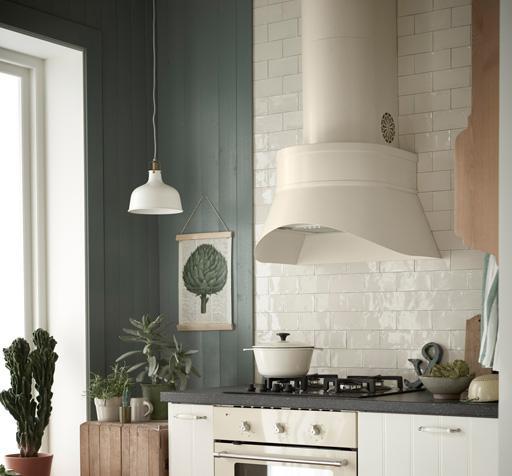

View gallery

